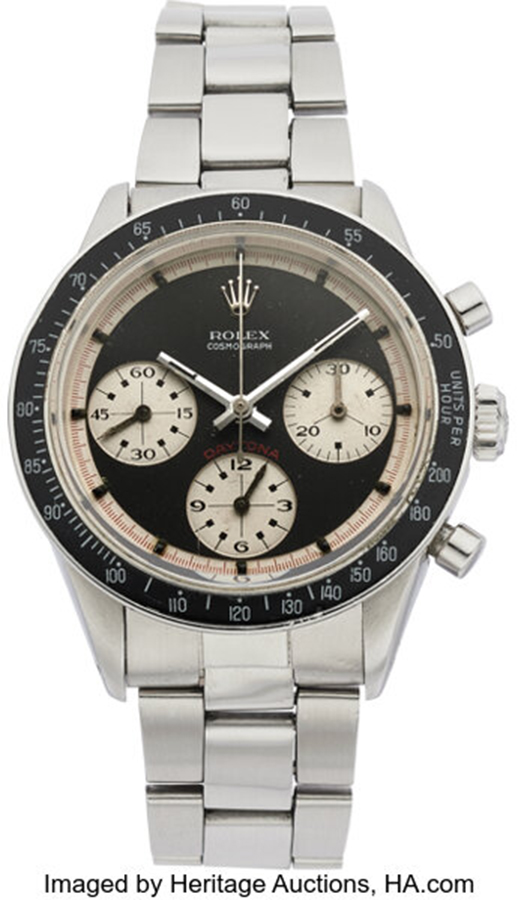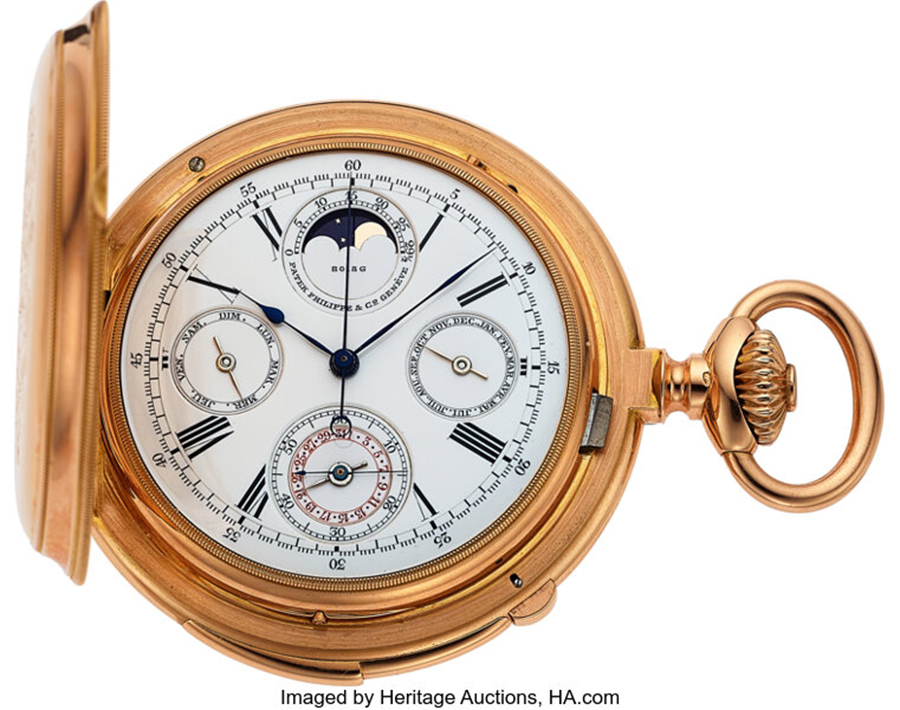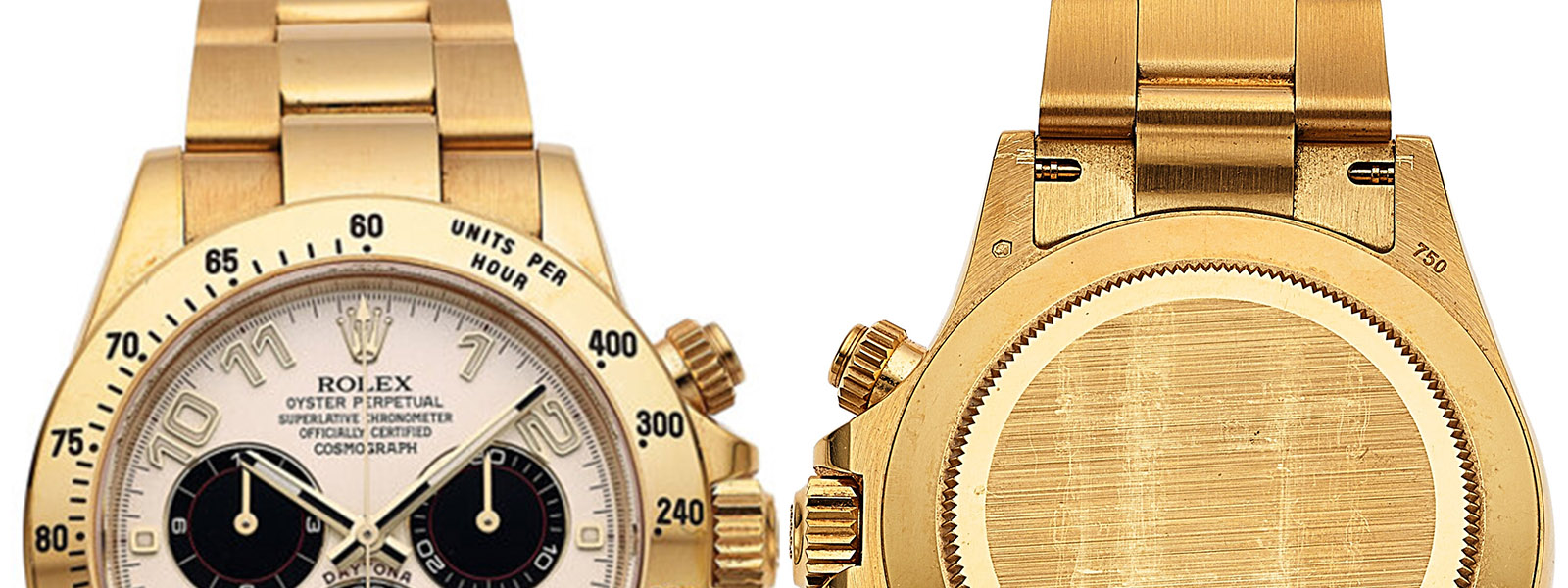WHAT TO KNOW BEFORE BIDDING ON YOUR NEXT FINE TIMEPIECE
By Tai Sione
Once considered a niche interest for collectors, watches have become a top-performing collectible. With a new crop of collectors and investors seeing them as dependable stores of value as blue-chip assets, wristwatches and pocket watches have been commanding world-record prices at auction in the past few years. One recent notable performer: Paul Newman’s personal Rolex Daytona, which sold for $17.8 million in 2017.
Today’s watch collectors also come from more diverse backgrounds than ever before, and what they collect is equally varied. Whether it’s a recent college graduate collecting vintage watches with obscure case design, a newly minted crypto millionaire buying popular sports models or a young woman wearing independent brands, they all have one thing in common: their love of fine watches. Regardless of which subcategory of watches you gravitate toward, however, there are some basic rules of thumb to remember when collecting.
Condition Is Key
Whether a watch is modern or vintage, one of the most important factors to consider is its condition. When we say condition, we mean the current state of three main components: the case, the dial and the movement. Jewelers often will try to restore a watch by buffing the case to achieve a shiny, new finish or maybe touch up the dial to present more clearly, but collectors should look for pieces in as close to original condition as possible, as these watches retain their value the best over time.
Enlarge

Inspect the Case
When assessing the condition of a watch’s case, what you look for depends on the metal of the case. If the watch is in a yellow gold case, look for gold import hallmarks. These small symbols denote whether the yellow gold used for the case was 9, 14 or 18 karat gold (typically). These karat denominations were also used for other metals, such as rose gold and white gold. For stainless steel cases, look for original finishing or the pattern that the brand applied to the case when it left the factory. Typically, with stainless steel watches, you’ll want to look for a brushed finish, usually found on the sides or rear of the lugs, as well as the caseback.
Enlarge

Scrutinize the Dial
Dials can be tricky. When they get dirty or worn down, jewelers or watchmakers often will want to “refinish” them, which basically makes them appear as new. You want to find watches with original dials, if possible. To tell if a dial is in original condition, take a loupe (essentially a small, very strong magnifying glass) and scrutinize every detail of the dial. Does the minute track look equal and consistent throughout? Check the text, which should be just under the 12 o’clock or just above the 6 o’clock. Look for any irregularities, such as inconsistent font size, as well as any serif or stroke of a letter that looks out of place.
Examine the Movement
Lastly, with the help of a watchmaker, confirm that the movement is in good, functional condition. It is common for parts on the movement to be replaced over time, similar to how a car owner may change air filters, batteries or brake pads over the years, and does not severely impact the value or integrity of the watch. It’s also best to confirm that the movement caliber is correct for your watch by cross-referencing with examples online. For example, if you have a vintage Rolex Daytona, it should have a caliber 72 by Valjoux, the manufacturer that supplied Rolex with chronograph movements during this period.
Enlarge

Rarity Matters
Another crucial factor to keep in mind is rarity. Watches that were produced in limited quantities will generally perform better than those that were mass-produced, as they’re empirically rarer, which, in a collector’s eyes, makes them more desirable. There are different levels of rarity in different categories. In Rolex, the rare variations of sports models are most popular. Take Paul Newman’s Daytona, for example. These watches were produced in the ’60s and well into the ’70s but had a poor reception back then. Because they were unpopular, they were produced in very limited quantities. After being seen on the wrist of the actor and motorcar enthusiast, however, they gained popularity in the ’90s and 2000s. Now Rolex Daytonas with the so-called “Paul Newman” dials command extreme premiums over models with standard dial configurations.
Enlarge

For Pocket Watches, Consider the Complications
When it comes to collecting, the same rules that apply to wristwatches generally apply to pocket watches, though one criterion stands out: complications. When collecting pocket watches, you want to collect examples with complications, such as a moon phase indicator, annual or perpetual calendar, chronograph function or a tourbillion, just to name a few. Pocket watches with complications tend to retain their value best and attract the most astute and discerning collectors.
Collect What Strikes Your Fancy
At the end of the day, it’s important to collect what you like. This may be determined by a multitude of factors, such as your wrist size, lifestyle or even your occupation, but wherever your passion as a collector tends to gravitate is where you should focus your collecting. However, regardless of which subcategory you’re drawn to, you should try to collect the best examples available. Whether you collect Seiko wristwatches for a few hundred dollars each or piece-unique Patek Philippes with valuations in the hundreds of thousands, as long as you follow the guidelines above, you can amass a world-class collection.
 TAI SIONE is Associate Specialist, Watches & Fine Timepieces, at Heritage Auctions.
TAI SIONE is Associate Specialist, Watches & Fine Timepieces, at Heritage Auctions.
Heritage Auctions’ next Watches & Fine Timepieces Signature® Auction, featuring the Collection of Dr. Paul Williamson Pierce III, will take place November 16. For inquiries, contact Tai Sione at TaiS@HA.com or 214-409-1539.

